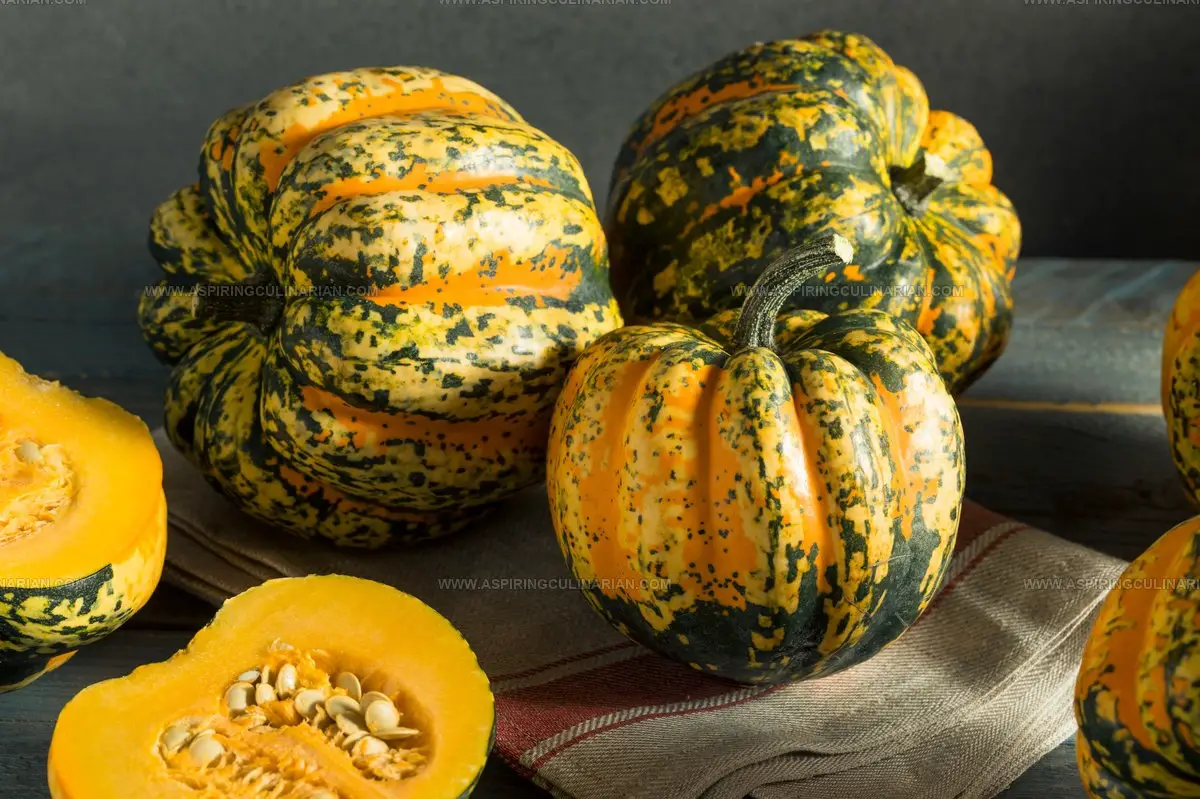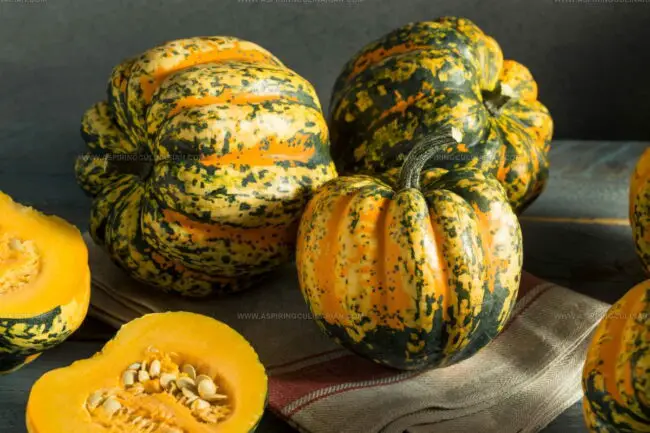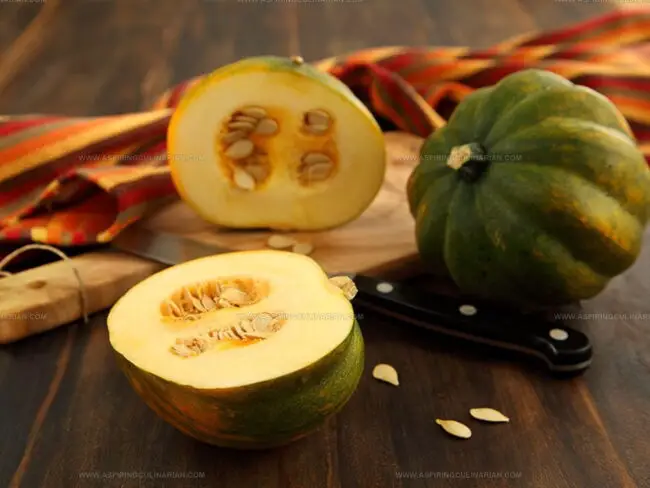What Does Acorn Squash Taste Like? Find Out The Nutty Truth
Acorn squash, a vibrant autumn staple, often sparks curiosity among food enthusiasts seeking new culinary adventures.
Curious cooks wonder about its unique flavor profile and potential culinary applications.
This winter squash variety brings more than just aesthetic appeal to your dinner table.
Its distinctive shape and rich color make it a standout ingredient in seasonal recipes.
Nutritionists praise its health benefits, while home chefs appreciate its versatility in both savory and sweet preparations.
Understanding its taste can transform your cooking approach and expand your recipe repertoire.
Unraveling the delicious mystery of acorn squash might just revolutionize your kitchen creativity.
What Is Acorn Squash?
Squash gets its unique name from its shape that closely resembles an acorn.
Pepper squash falls into a wide range of squash types, which include favorites like pumpkin, carnival, butternut, and banana.
Dark green skin with deep vertical lines marks the typical acorn squash, though some versions sport golden outer coverings.
Inside, soft orange-yellow meat fills the small vegetable.
Small in size, these squashes typically weigh around 2 pounds and stretch between 4 to 7 inches long.
Acorn Squash Taste Guide
Soft and slightly sweet, acorn squash might seem plain at first glance.
Modest flavor can quickly change with smart ingredient pairings.
Sweet touches like maple syrup or brown sugar help boost its taste.
Rich dishes complement this vegetable nicely.
Squash easily soaks up surrounding flavors, making it super flexible in cooking.
Mellow and smooth, acorn squash carries a subtle buttery taste.
Hints of pumpkin shine through with extra sweetness.
Chefs can prepare this veggie multiple ways - roasting, steaming, or sautéing work well.
Small additions like nuts and brown sugar bring more depth to its simple profile.
Nutrition packed and adaptable, acorn squash slides into many meal plans.
Roasting brings out the best qualities in this vegetable.
Soft texture mimics pumpkin with a gentler flavor profile.
Low heat helps develop its natural sweetness.
Scattered nuts and brown sugar can enhance its mild character during cooking.
Slow preparation allows subtle tastes to emerge gently.
Cooking methods matter when preparing acorn squash.
Most sections work great in recipes, though seeds and skin need careful handling.
Mild flavor matches well with many ingredients.
Surprisingly versatile, this vegetable handles raw and cooked preparations.
Packed with nutrients, acorn squash serves vegans and vegetarians perfectly.
Delicate notes remind some people of butternut's smooth essence.
How Ripeness Affects Acorn Squash Flavor
The ripeness of acorn squash makes a big difference in how it tastes and feels when cooked:
Choosing a ripe acorn squash brings out its natural sugars and delivers the best taste and texture in every meal.
Steps to Prepare Acorn Squash
Acorn squash belongs to the Cucurbita genus and offers a mild yet flavorful profile.
Wondering how to prepare this veggie? Cooking methods for acorn squash range wide - from soup to grilling to steaming.
Newcomers to vegetable cooking can focus on three basic approaches.
Roasting stands out as the simplest cooking technique.
Bonus points because you can cook other ingredients inside its hollow center.
Roasting requires splitting the squash in half, scooping out seeds and connected soft flesh.
Generously coat inner surfaces with oil or butter, sprinkle some salt, then place halves facing upward in a 400F oven for 45 minutes.
Spices and extra ingredients can enhance basic roasting, but this method works well on its own.
Microwaving works differently.
Slice squash in half, remove seeds and soft flesh, then coat with oil or butter.
Place halves on a plate, microwave on high for 10 minutes.
Single-side cooking might need adjusted timing.
Sauteing needs more preparation.
Cut squash in half, remove seeds, then peel off green skin using a vegetable peeler.
Chop into bite-sized cubes.
Use less than a cup of stock with cooking spray, oil, or butter in a pan.
Cook diced squash over medium heat for around 15 minutes, stirring often, until liquid disappears and edges brown slightly.
Acorn Squash: Health Perks
Health-boosting compounds inside acorn squash help stop harmful molecules that could damage body systems.
These protective substances might shield you from serious medical conditions like joint swelling, heart concerns, blood vessel blockages, high blood pressure, and specific cancer risks.
Key health advantages of acorn squash include:
Benefits Eye Health
Eating half a cup of cooked acorn squash gives you 9% of your daily vitamin A, plus extra vitamin A your body makes from the alpha- and beta-carotene found in the squash.
Vitamin A is essential for healthy eyes, as it helps keep your cornea in good condition and supplies the moisture your eyes need to work properly.
Reduces Risk Of Heart Attack And Stroke
Squash from acorn trees brings amazing health benefits for heart wellness.
Medical research shows special compounds inside this vegetable can lower chances of heart problems.
Specific nutrients called carotenoids work best when eaten as natural food instead of taking vitamin pills.
Natural sources provide better protection compared to manufactured supplements.
Shields The Skin
Squash seeds pack helpful vitamins that might shield skin from harmful sun rays and potential cancer risks.
Scientists continue studying these early findings to understand exactly how protection works and what amounts could be most effective.
Lowers The Chance Of Getting Cancer
Recent research suggests consuming foods packed with vitamin A might reduce squamous cell skin cancer risk by 15%.
How to Buy and Store Acorn Squash
Looking to buy acorn squash?
Shopping for this veggie requires some careful attention.
Start by checking the color first.
Ripe acorn squash shows a deep green shade.
My experience suggests darker vegetables often pack more flavor.
While examining the squash, make sure its stem looks dry and firm.
Missing the stem?
No worries.
Press the squash gently to test its readiness.
Firm skin signals a good choice.
Watch out for squash with orange-tinted skin, which warns of being past its prime.
Orange coloring means the inside might feel dry and tough.
Size matters too.
Seek out a squash with some good weight.
Check carefully for any signs of mold or dark spots.
Fresh acorn squash will last about two weeks inside your refrigerator.
Hoping to keep it longer?
Find a spot with temperatures between 50 and 55 degrees Fahrenheit.
Careful storage makes a big difference.
Temperatures below 50 degrees can damage the squash.
Once cooked, this vegetable becomes more delicate.
Stored in the fridge, cooked acorn squash stays safe for just 3-4 days.
Picking the right squash means looking closely at its color, feeling its firmness, and watching for any signs of damage.
With these tips, you can select a perfect acorn squash for your next meal.
Growing Acorn Squash at Home
Growing acorn squash demands substantial space.
Gardening experts suggest dedicating around 50 square feet for a single planting plot, with just two or three acorn squash plants.
Limited garden space doesn't mean giving up - squash can thrive on a trellis system.
Successful growth requires plenty of sunlight and soil packed with nutrients.
Timing matters when planting acorn squash.
Wait until after the final seasonal frost, when ground temperatures consistently stay above 60 degrees.
Create a small mound several inches above ground level and carefully place six acorn squash seeds, nestling them one to two inches beneath the soil surface.
Gentle daily watering keeps the soil comfortably moist.
Seedlings typically emerge within one to two weeks.
Once sprouted, thin the plants by removing all except the two or three strongest.
Consistent moisture remains key during growth stages, so continue watering to maintain soil dampness.
Mature acorn squash are ready for harvest approximately 12 to 13 weeks after initial sprouting.
Aim to collect the entire crop before winter's first significant frost arrives.




Nathaniel Brooks
Founder & Recipe Developer
Expertise
Farm-to-table cuisine, Seasonal recipe development, Culinary storytelling
Education
Ivy Tech Community College – Indianapolis, IN
Culinary Arts / Hospitality Administration & Events
Focused on hands-on training in classical and modern culinary techniques.
Nathaniel’s story starts in the foothills of the Appalachian Mountains, where farm stands, backyard gardens, and old family recipes shaped his love for real food. After graduating from Ivy Tech Community College in Indianapolis, he spent years working in farm-to-table kitchens, learning how to turn local, seasonal ingredients into something memorable.
Today, Nathaniel pours that same spirit into every single recipe on Aspiring Culinarian – recipes that feel real, comforting, and connected to the land. When he’s not in the kitchen, you’ll find him foraging wild herbs, chasing sunsets with his camera, or writing about the flavors that shaped his roots.